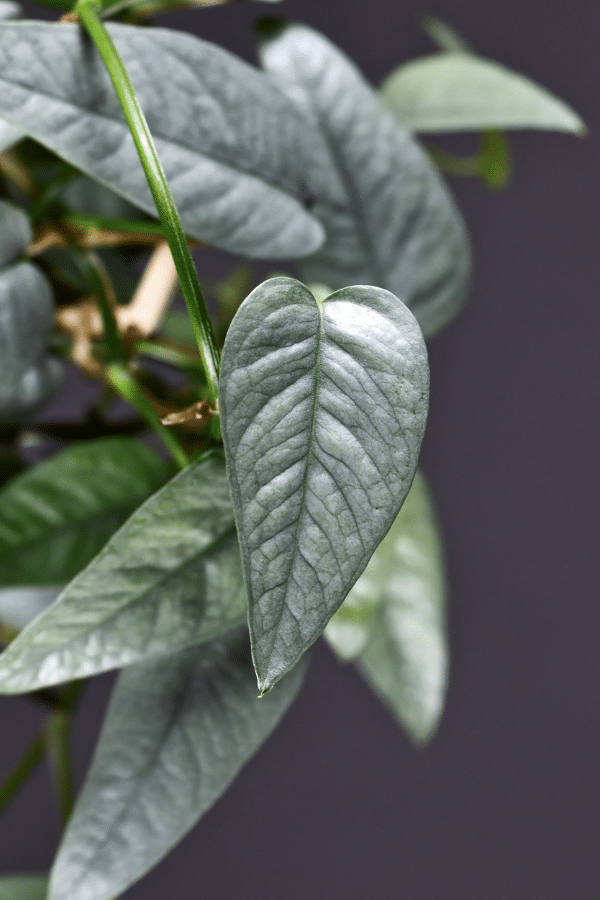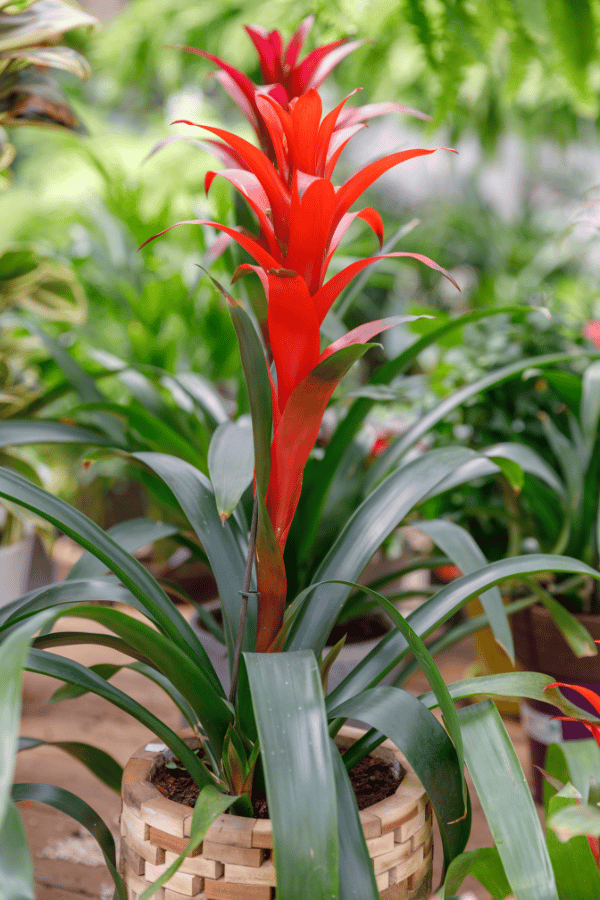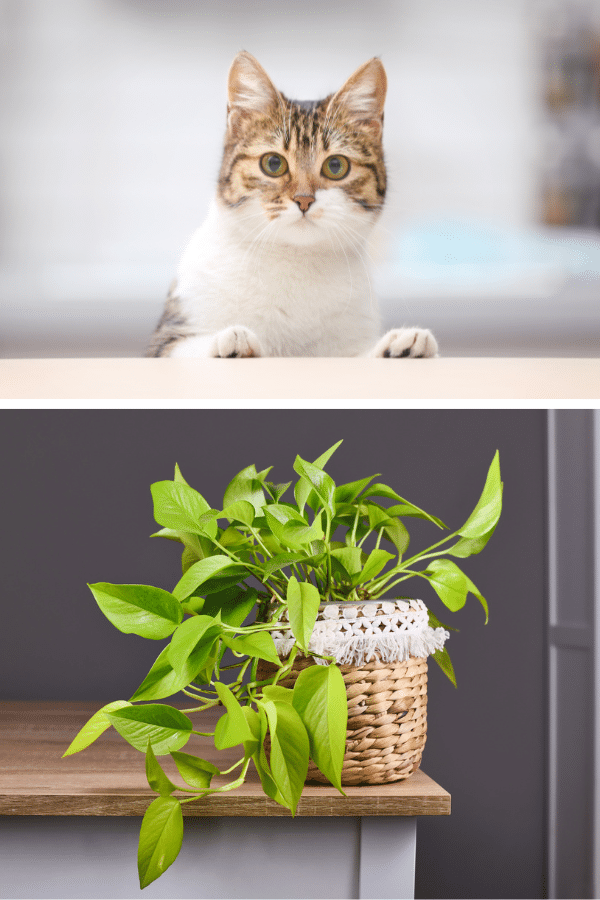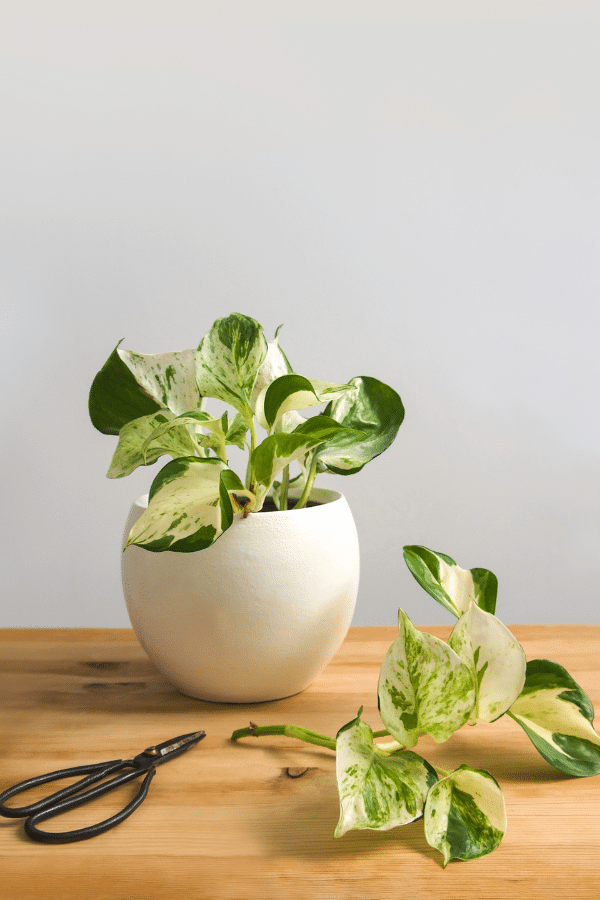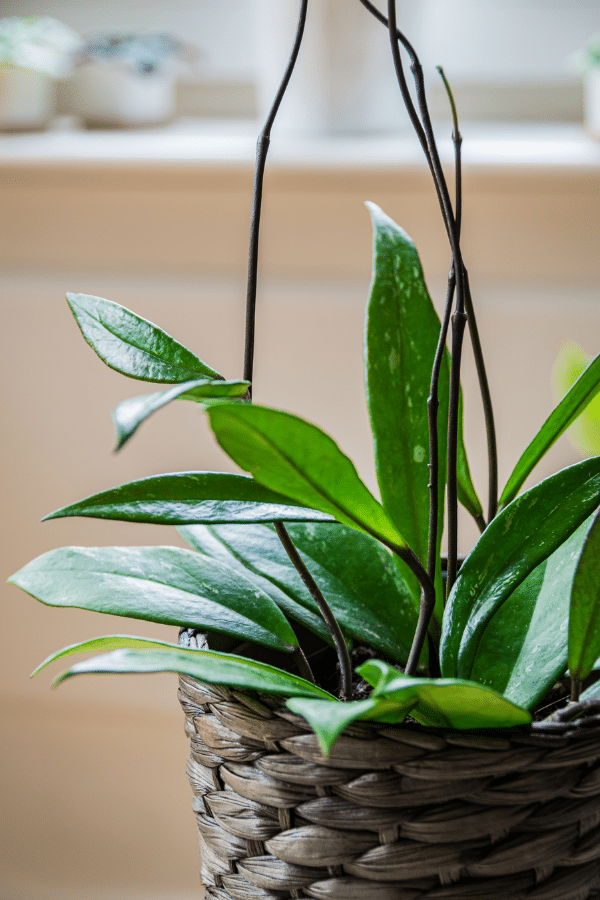Philodendron Hederaceum
Scientific Name: Philodendron Hederaceum, Philodendron Micans
Common Name: Velvet Leaf Philodendron
Philodendron Hederaceum care is relatively easy. If you want a houseplant that has rich, thick, velvety leaves, a the Velvet Leaf Philodendron Hederaceum plant may be perfect for you.
To give this Philodendron plant the best care, it requires well-draining soil, allows the topsoil to dry out between waterings, providing it with bright indirect sunlight, temperatures ranging from 65-85F, and humidity levels of at least 50%.
Quick Care Overview
| Common Name | Velvet Leaf Philodendron |
| Scientific Name | Philodendron Hederaceum, Philodendron Micans |
| Family | Araceae |
| Origin | Caribbean, Central America |
| Growth Rate | Medium |
| Identification | Dark green velvet heart-shaped vining leaves |
| Height | Up to 13 feet in length |
| Soil | Well-draining soil |
| Water | Let soil dry out completely before watering |
| Temperature | 65-85F |
| Sunlight | Bright indirect light |
| Toxic to Cats & Dogs | Yes |
| Toxic to Humans | Yes |
| Pests | Fungus gnats, aphids, spider mites |
| Diseases | Root rot |
Below we will dive deep into this Philodendron Hederaceum care guide.
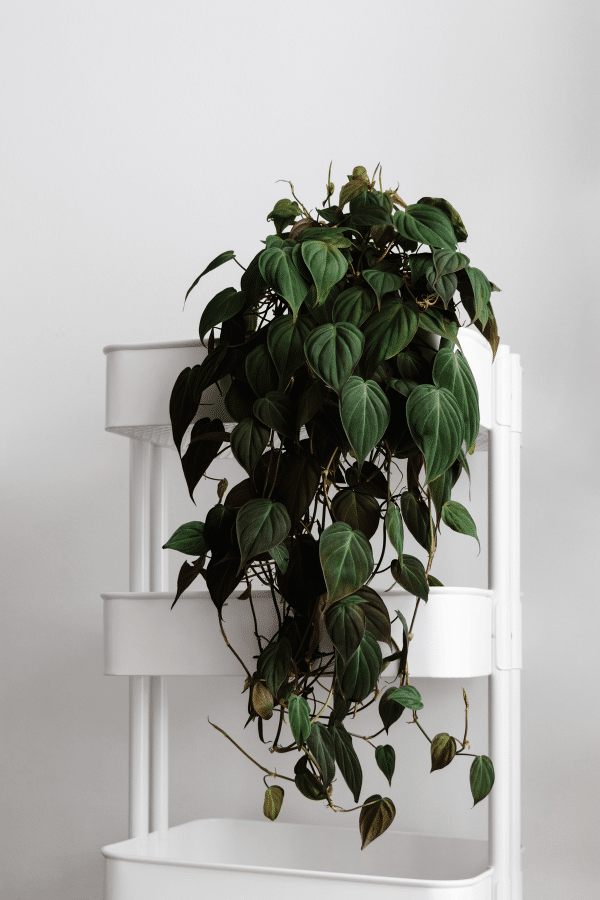
Philodendron Hederaceum History
Philodendron Hederaceum, otherwise known as the Velvet Leaf Philodendron, Philodendron Micans, Sweetheart Plant, or simply Parlor Ivy, is a gorgeous tropic vining Philodendron with striking, velvety leaves. Hailing from the Caribbean and parts of Central America, this tropical vining plant may be commonly seen growing up trees. In addition to its beautiful foliage, this Philodendron is known for its air-purifying qualities.
The plant used to be named Philodendron Micans, but is now referred to as Philodendron Hederaceum. This plant is also often confused with Philodendron Cordatum, which is an entirely different plant.
Philodendron Hederaceum Identification
Philodendron Hederaceum has yellowish-hued velvet, heart-shaped leaves attached to golden stems on long vining tendrils. Leaves will transition from golden-bronzish hues to vibrant green throughout maturation.
Philodendron Hederaceum Growth Facts
Quick-growing and long, this vining Philodendron requires ample room to trail.
How Big Does a Philodendron Hederaceum Get?
This trailing evergreen vine may trail up to 13’ long.
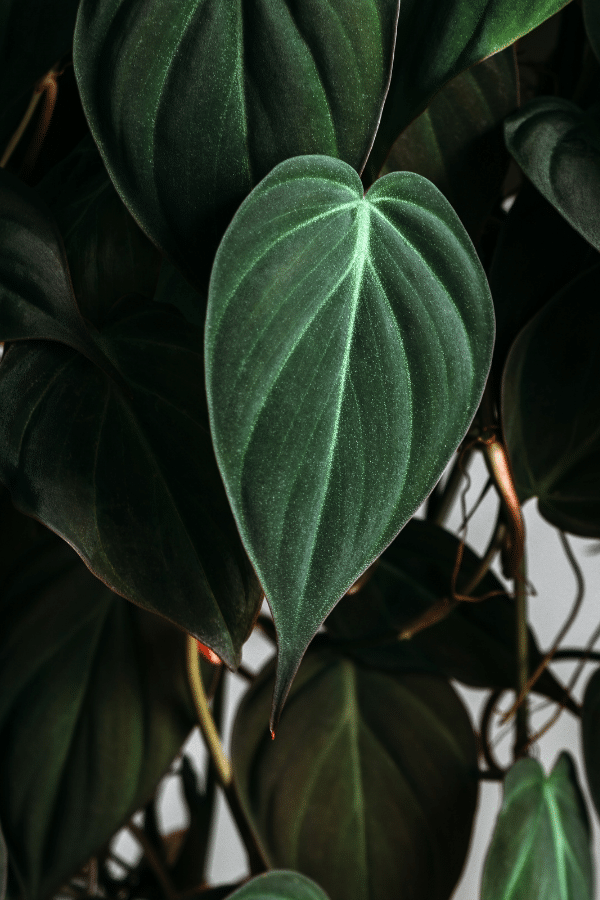
Philodendron Hederaceum Care
The Velvet Leaf Philodendron Hederaceum care is easy and with proper care, will reward you with brilliant, lush foliage. Just ensure that you do not overwater this plant, as it is quite sensitive to overwatering.
Philodendron Hederaceum Soil
As this Philodendron is easy-to-care-for, any good-quality commercial potting soil should work perfectly for this plant, as long as it is well-draining. Incorporating perlite will aid in water drainage.
Philodendron Hederaceum Fertilizer
Philodendron Hederaceum will benefit from a monthly feeding from a balanced, all-purpose liquid fertilizer during the warm growing season of spring and summer to boost foliar growth. Ensure that you do not feed your plant during the fall or winter during dormancy. Ensure that you follow all label instructions and do not overfertilize. Excess salt buildups within the soils may lead to chemical burn.
Philodendron Hederaceum Watering
As this plant is very forgiving and easy to care for, it doesn’t require much in the way of watering. It is just important not to overwater your plant. Instead, your plant should be rewatered as soon as the top few inches of soil have dried out.
Philodendron Hederaceum Light Requirements
This Philodendron likes to be kept in bright, indirect light such as from an East or West facing window. This plant may be grown in low light, but this will result in smaller foliage. However, this plant will burn if kept in bright direct sunlight.
Philodendron Hederaceum Temperature & Humidity
Being a tropical plant, Philodendron Hederaceum likes to be grown in warm environments between 65 to 85 degrees Fahrenheit. However, if temperatures exceed 86 degrees Fahrenheit, growth may be stunted. It is also important to note that this plant is not frost tolerant, and temperatures below 60 degrees Fahrenheit may permanently damage it. Additionally, although this plant will tolerate low humidity, it will perform best when grown in an environment with at least 50 percent humidity. To increase humidity, you may install a humidifier, pebble tray, or group your Philodendron next to other plants.
Repotting Philodendron Hederaceum
Philodendron Hederaceum should be repotted every 1-2 years in spring or summer during active growth. Select a container that is 1-2” larger than the previous pot. Repot your plant, refresh the soil, tamp, and place in indirect light. Ensure that the container you select has ample drainage holes.
Philodendron Hederaceum Maintenance & Pruning
Philodendron Micans is an extremely fast-growing plant that may take over your space in no time. To prune, use clean, sharp shears to cut the vines back to your desired size. Ensure that you never cut more than ⅔ of your plant. Additionally, leaves should be dusted to ensure proper photosynthesis is occurring.
Philodendron Hederaceum Propagation
Propagation of the Velvet Leaf Philodendron is extremely easy and may be done through stem cuttings. Simply cut a stem that is several inches long, such as during pruning, and place this cutting into water. Within a month, you should see your cutting beginning to root. After the roots have become a couple of inches long, they may be transferred into a container and planted into potting soil. After potting, water, and place in indirect light.
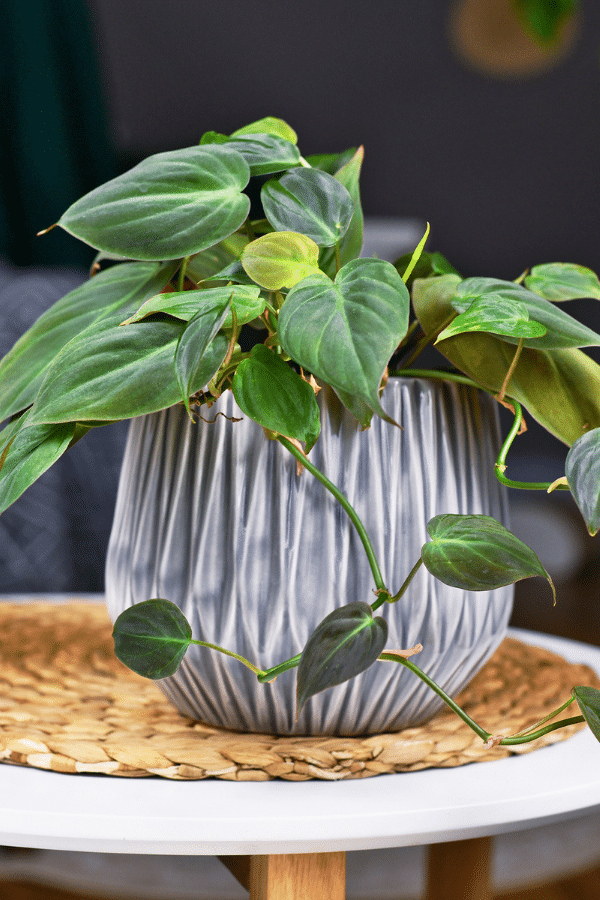
Philodendron Hederaceum Toxicity
Containing calcium oxalate crystals, Philodendron Hederaceum is a toxic houseplant and should be kept out of reach of children and pets. If ingested, this plant will cause gastrointestinal issues. Wash hands after handling this plant as touching it can cause dermatitis.
Toxicity to Humans
Philodendron Hederaceum is considered toxic to humans and should not be ingested.
Toxicity to Cats & Dogs
Philodendron Hederaceum is considered toxic to pets and should not be consumed. If you believe that your pet has eaten any portion of this plant, you should contact your veterinarian or animal poison control immediately.
Philodendron Hederaceum Problems
Philodendron Hederaceum Leaves Turning Yellow
Yellowing of the foliage of the Velvet Leaf Philodendron is often due to overwatering. Ensure that you allow your plant’s soil to dry out at least one inch before rewatering your plant.
Philodendron Hederaceum Leaves Turning Brown
When the foliage of your Philodendron Micans turns brown, it is typically indicative of a fungal or bacterial disease caused by too much water.
Philodendron Hederaceum Diseases
Fortunately, this plant is not known to suffer from any serious disease problems. Although it is generally disease-resistant, periodically be on the lookout for any signs of distress.
Philodendron Hederaceum Pests
Fortunately, this plant is not known to suffer from any serious pest problems. Although spider mites, fungus gnats, and aphids can infect this plant so always be on the lookout for any signs of distress.

